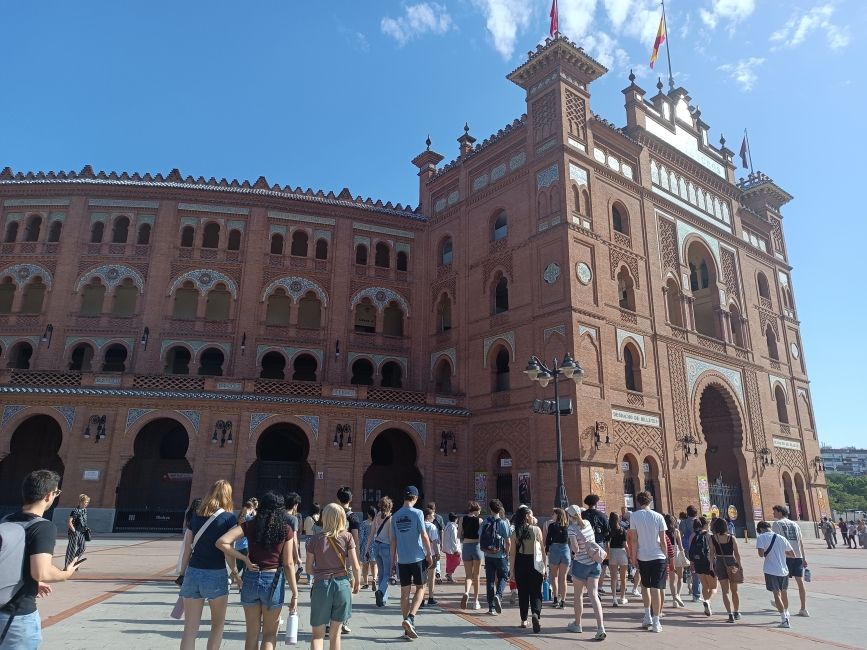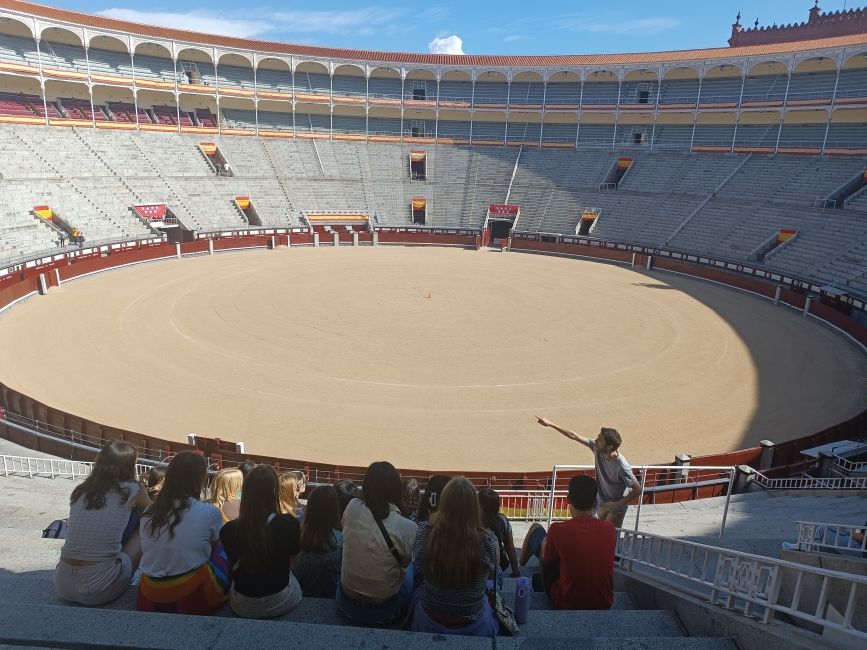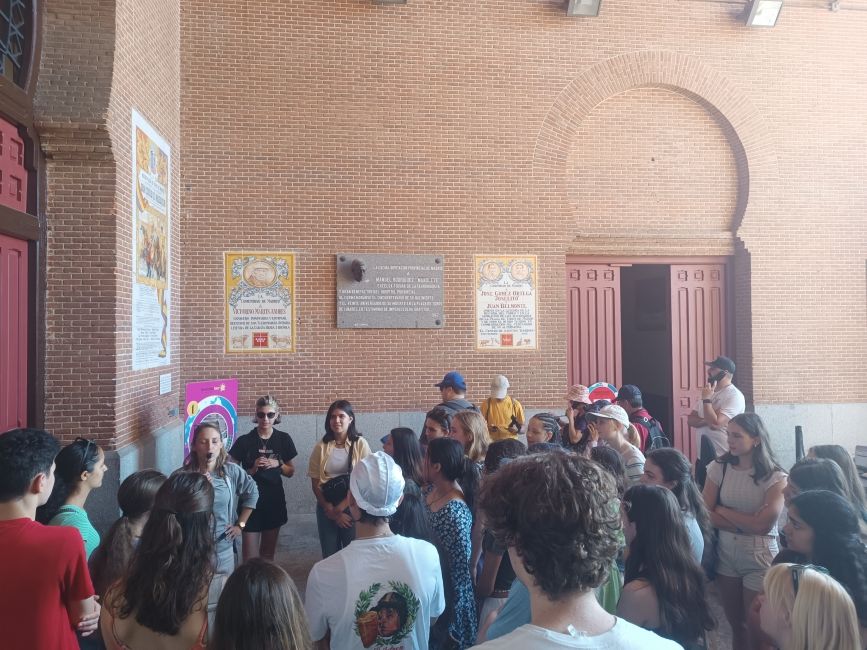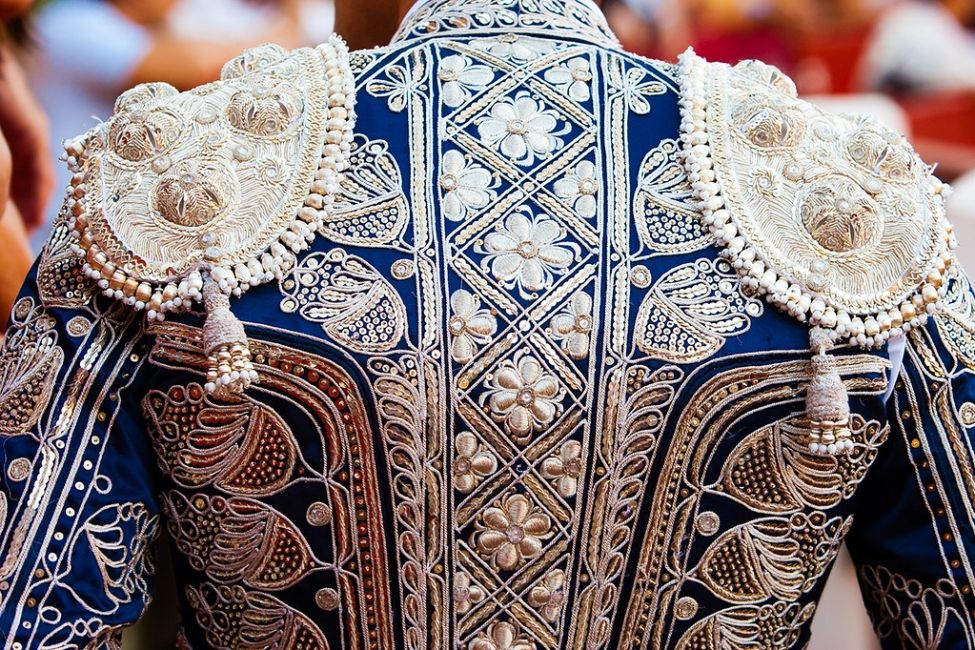Bullfights in Spain: tour of Las Ventas
We started our stay in Spain with a tour of la Plaza de Toros de Las Ventas—Madrid’s world-famous bullring.
The guides explained that this neo-mudéjar style bullring was inaugurated in 1931, and it’s one of the largest in the world. Furthermore, it’s one of the best not because of its size but because of how demanding the audience is with the technique the bullfighters display.
This building sparks curiosity not only due to its architecture and history, but because of the current debate in Spanish society around the topic of bullfighting. There are those who defend it as an art, connected with ritual, animal sacrifice, and steeped in historical significance. And, there are also those who denounce the practice as animal torture, aiming to put an end to it despite the good life the animals live until they access the ring at age 6.
Our guide explained the rules of the ritual, emphasizing it is not a competition with wins or losses. The greatest honor for a bullfighter is to exit la puerta grande in glory, on their colleagues’ shoulders, carrying with them both ears of the bull. However, a bull can also receive an indulto or pardon, and live out the rest of its life in the countryside in freedom.
We visited the infirmary, observed the palco real (where the king sits when he attends a faena), walked on the sand, saw the puerta de arrastre (where the bull is dragged out when the bullfight ends), and the museum.
The museum offers insight as to the posters and the fashion developed in connection with bullfighting—and if you look closely, you can see how intricate the traje de luces is, and admire its influence on high fashion past and present.
Truth is that very few Spaniards attend bullfights today, and the practice is going through a bit of a crisis. At the same time, regardless of your stance on it, a tour of Las Ventas offers great insight into this topic, and understanding and complexity of a practice that after centuries, continues to divide Spanish society.
Related Posts

Segovia - Where History Meets Adventure
Read on to find out about castles, kayaks, and culture!
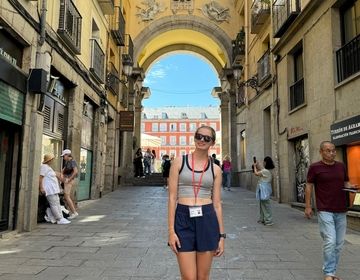
Bringing Madrid Home: How to Infuse Your Wardrobe with Summery Spanish Flair
This week Global Navigator Kate Hutchinson is going to teach us about her experience with fashion in Madrid!! Here is what Kate has learned this month: From colorful patterns to... keep reading
¡Vamos a la Playa! A Weekend Getaway in Valencia
In true Spanish fashion, we escaped to the Mediterranean city, Valencia. At around 12:30 pm after class, we set off to the east of Spain! The students were so excited... keep reading
